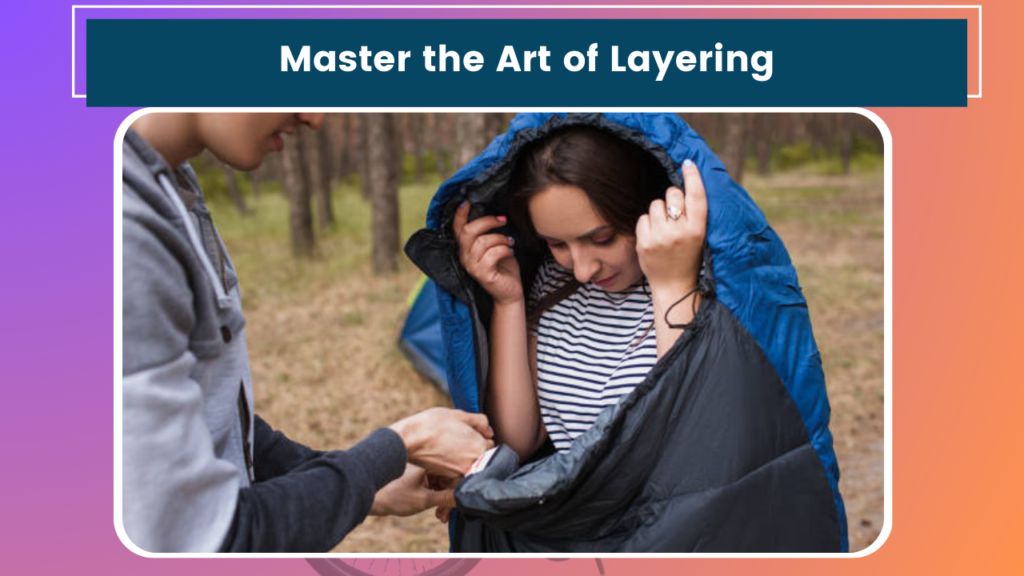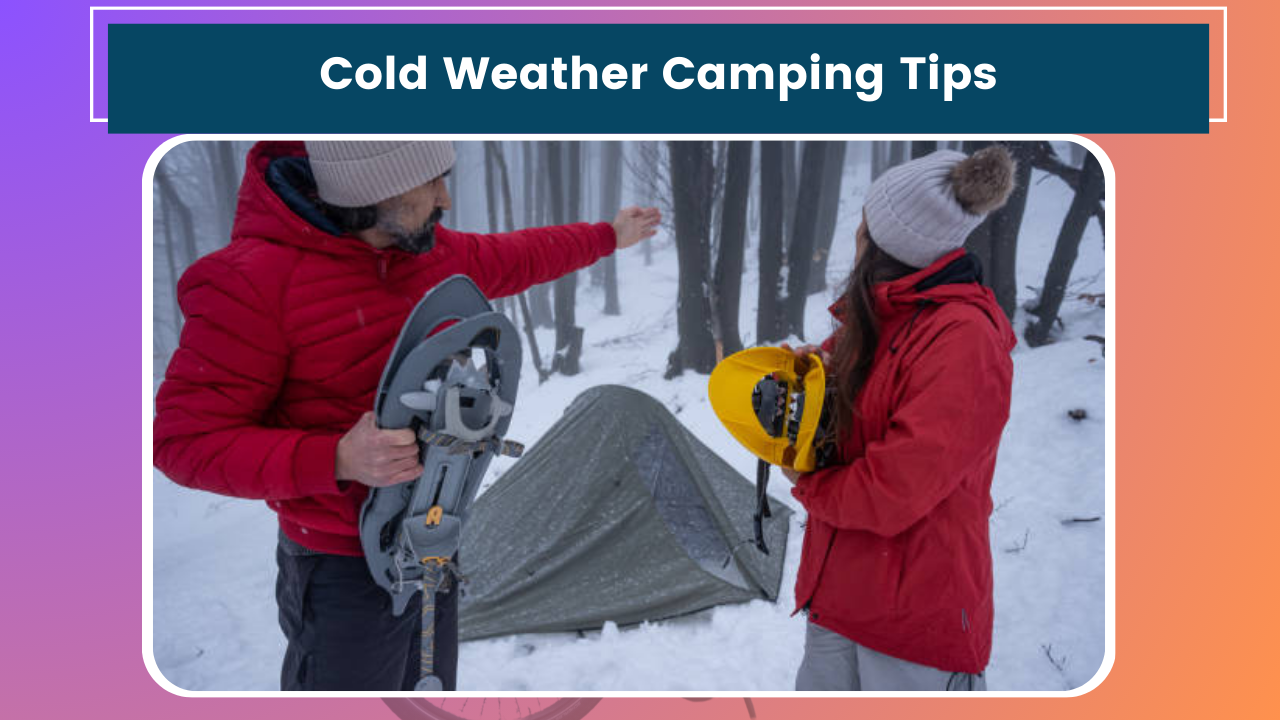As I zip up my heavy-duty sleeping bag and nestle deeper into my tent, I can hear the wind howling outside. The temperature has dropped well below freezing, but I’m snug and warm in my little cocoon. Cold-weather camping isn’t for the faint of heart, but with the right preparation and knowledge, it can be an incredibly rewarding experience.
I’ve spent countless nights in the great outdoors during all four seasons, and winter camping holds a special place in my heart. There’s something magical about waking up to a fresh blanket of snow or watching your breath form misty clouds in the crisp morning air. But I’ve also learned the hard way that being unprepared for cold conditions can turn a fun adventure into a miserable (or even dangerous) ordeal.
That’s why I’m sharing my top tips for cold-weather camping. Whether you’re a seasoned outdoor enthusiast looking to extend your camping season or a newbie eager to try winter camping for the first time, these insights will help you stay safe, comfortable, and warm on your next cold-weather expedition.
Gear Up for Success
The right gear can make or break your cold-weather camping experience. Trust me, I learned this the hard way on my first winter camping trip when I brought my three-season tent and summer sleeping bag. I spent a long, shivering night regretting my poor choices!
Here’s what you’ll need:
- Four-season tent: Look for a sturdy tent designed to withstand snow and high winds.
- Cold-weather sleeping bag: Choose a bag rated for at least 10°F lower than the coldest temperature you expect to encounter.
- Insulated sleeping pad: This creates a crucial barrier between you and the cold ground.
- Warm, layered clothing: We’ll dive deeper into this later.
- Insulated, waterproof boots: Keep those toes toasty!
- Hand and foot warmers: These can be lifesavers on particularly cold nights.
- Camp stove and fuel: Cold weather increases fuel consumption, so bring extra.

Master the Art of Layering
Proper layering is key to regulating your body temperature in cold conditions. I always follow the three-layer system:
Base layer: This should be moisture-wicking to keep sweat away from your skin. I prefer merino wool or synthetic materials.
Middle layer: This is your insulating layer. Fleece or down work well here.
Outer layer: Choose a waterproof and windproof shell to protect you from the elements.
Don’t forget accessories like a warm hat, gloves, and neck gaiter. I once forgot my hat on a winter camping trip, and let me tell you, I won’t make that mistake again!

Set Up Camp Strategically
Choosing the right campsite can make a big difference in your comfort level. Here’s what I look for:
- Natural windbreaks: Trees, large rocks, or hillsides can provide shelter from icy winds.
- Elevated ground: Cold air sinks, so avoid low-lying areas where it can pool.
- Avoid avalanche-prone areas: If you’re in mountainous terrain, be aware of potential avalanche dangers.
Once you’ve found your spot, pack down the snow before setting up your tent. This creates a more stable surface and helps insulate you from the cold ground.
Stay Hydrated (Yes, Cold Weather Camping!)
It’s easy to forget about hydration when you’re not sweating buckets, but staying properly hydrated is just as important in cold weather as it is in summer. Dehydration can increase your risk of hypothermia and frostbite.
I always bring a thermos filled with hot water or tea. It’s a great way to warm up from the inside out, and the steam can help add some much-needed moisture to the dry winter air. Just be careful not to drink it too hot – I once burned my tongue on scalding tea and couldn’t taste anything for days!
Fuel Your Body Right
Your body burns more calories to stay warm in cold weather, so make sure you’re eating enough. Pack calorie-dense, easily digestible foods that provide sustained energy. Some of my favorites include:
- Nuts and dried fruits
- Energy bars
- Oatmeal
- Peanut butter
- Hot chocolate (for a warming treat)
I always bring a few extra snacks to munch on throughout the day. There’s nothing worse than lying awake at night with a growling stomach!

Keep Your Gear Dry
Moisture is the enemy of warmth. Even a little bit of dampness can significantly reduce the insulating properties of your clothing and sleeping bag. Here are some tips to keep things dry:
- Store damp clothes in a sealed plastic bag.
- Hang wet items inside your tent to dry overnight (but be careful not to create too much condensation).
- Use waterproof stuff sacks for important gear.
- Avoid sweating excessively by adjusting your layers as you hike.
I once made the mistake of stuffing my damp socks into my sleeping bag, thinking they’d dry overnight. Instead, I woke up to partially frozen socks and a damp sleeping bag. Lesson learned!
Master Fire-Starting in Cold Conditions
A warm fire can be a game-changer on a cold camping trip, but starting one in winter conditions can be challenging. Here’s what I’ve learned:
- Bring multiple fire-starting methods (waterproof matches, a lighter, and fire starter cubes).
- Collect dry tinder before you need it and store it in a waterproof container.
- Look for standing dead wood, which is often drier than fallen branches.
- Create a base for your fire using dry logs to keep it off the wet ground.
One time, I spent over an hour trying to start a fire with damp wood and a single lighter. Now, I always come prepared with multiple fire-starting options.
Insulate Your Sleeping Area
A good night’s sleep is crucial for enjoying your cold-weather camping trip. Here’s how I maximize warmth in my sleeping setup:
- Use a sleeping pad with a high R-value (which measures insulation).
- Place a reflective emergency blanket under your sleeping pad for extra insulation.
- Wear clean, dry base layers to the bed.
- Keep a water bottle filled with hot water in your sleeping bag for extra warmth.
- Wear a hat to bed – you lose a lot of heat through your head!

Be Prepared for Emergencies
Cold-weather camping comes with additional risks, so it’s essential to be prepared for emergencies. Always carry:
- A fully charged cell phone (kept warm in an inside pocket)
- A map and compass (don’t rely solely on electronics)
- A first-aid kit
- An emergency shelter (like a bivy sack)
- Extra food and water
- A headlamp with extra batteries
Make sure someone knows your planned route and expected return time. I always leave a detailed trip plan with a friend or family member before heading out.
Know the Signs of Hypothermia and Frostbite
Understanding the symptoms of cold-related illnesses can save lives. Watch out for:
Hypothermia:
- Shivering
- Confusion
- Slurred speech
- Drowsiness
Frostbite:
- Cold, prickling feeling
- Numbness
- Hard or waxy-looking skin
- Discoloration (red, white, bluish-white, or grayish-yellow)
If you or a camping companion show any of these symptoms, seek warmth and medical attention immediately.
Practice Leave No Trace Principles
Even in winter, it’s important to minimize our impact on the environment. Follow these guidelines:
- Pack out all trash (including food scraps).
- Use established campsites when possible.
- Don’t cut down live trees for firewood.
- Properly dispose of human waste (pack it out or bury it in snow away from water sources).
I once came across a beautiful winter campsite marred by trash left behind by previous campers. It was a stark reminder of how our actions can impact these pristine environments.
Embrace the Beauty of Winter Camping
Finally, don’t forget to take time to appreciate the unique beauty of winter landscapes. Some of my favorite cold-weather camping memories include:
- Watching the Northern Lights dance across a star-filled sky
- Waking up to a fresh blanket of snow sparkling in the morning sun
- The absolute silence that often accompanies a snowy forest
- Spotting animal tracks in the snow and imagining the stories behind them
Cold-weather camping can be challenging, but it’s also incredibly rewarding. There’s a special sense of accomplishment that comes from braving the elements and experiencing nature in its winter glory.
As I wrap up this article, I’m already planning my next winter camping trip. The forecast is calling for temperatures well below freezing, but I’m excited for the adventure ahead. With the right preparation and mindset, cold-weather camping can be an unforgettable experience.
So bundle up, gear up, and get out there! The winter wilderness is waiting for you. And who knows? Maybe I’ll see you out on the trails. If you spot a slightly overpacked hiker with a thermos of hot chocolate in one hand and a camera in the other, be sure to say hello!
Stay warm and happy camping!









